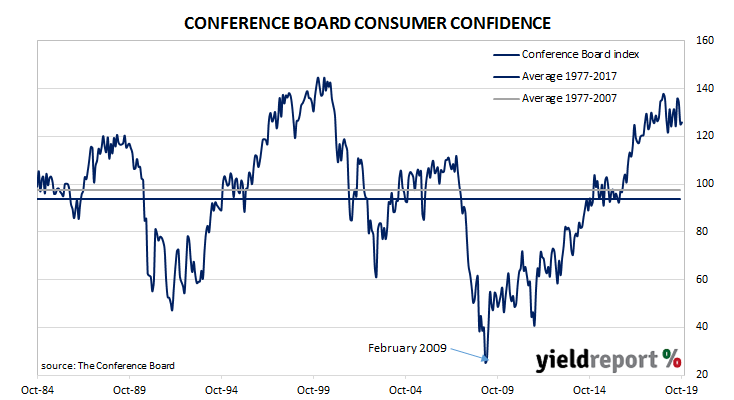US consumer confidence collapsed in late 2007 as the US housing bubble burst and the US economy went into recession. By 2016, it had clawed its way back to neutral and then went from strength to strength until late 2018. Since then, measures of consumer confidence have oscillated within a fairly narrow band while maintaining historically high levels. The most recent figures have continued in this manner.
The latest Conference Board survey indicates US consumers remained very optimistic, largely ignoring trade disputes and presidential politics. October’s Consumer Confidence Index registered 125.9, a small fall from September’s final figure of 126.3 and below the consensus figure expected. Consumers’ views of present conditions improved from those held at the time of the September survey but they were also less positive with regards to future conditions than a month ago.
The consensus expectation prior to the report was for a reading of around 128.0 but US Treasury yields increased across the yield curve while expectations of rate cuts firmed. By the end of the day, 2-year yields had gained 2bps to 1.65% while 10-year and 30-year yields had both increased by 4bps to 1.84% and 2.33% respectively. In terms of likely US monetary policy, according to federal funds futures contracts the likelihood of a rate cut at the FOMC’s October meeting increased from 94% to 95%.

